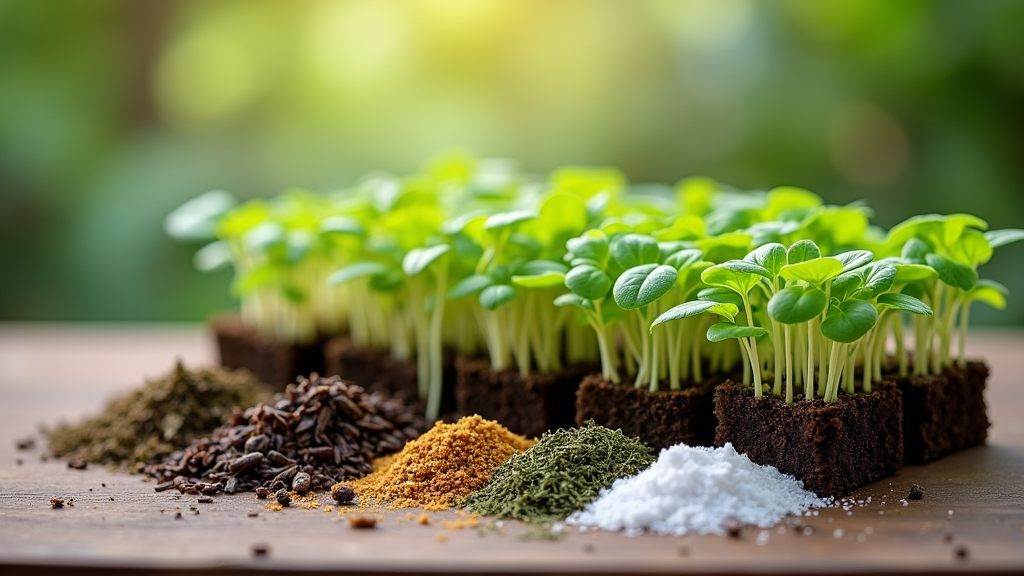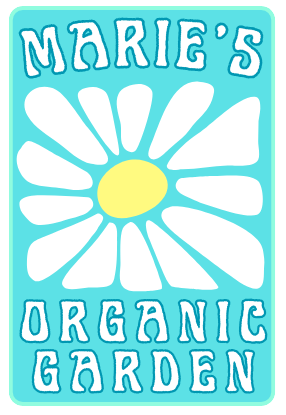
Homemade Organic Fertilizer Recipes
To Boost Your Garden’s Health, organic fertilizers can make a big difference in your garden’s growth and vitality. I’ve been experimenting with natural ingredients for years and found that the best results come from using everyday items that enrich the soil and feed my plants naturally. These recipes combine simple elements like Epsom salt, seaweed, and worm castings to give your plants a nourishing boost. Each method is affordable, environmentally friendly, and practical for organic gardens.
If you’re interested in keeping your garden healthy without relying on synthetic chemicals, these recipes might be exactly what you need. You can easily adopt these methods on your own, and the results exceed my expectations to invite a constant flow of nutrients into your soil. Keep reading if you want clear instructions and handy tips to try these recipes at home. These recipes are my go-to fertilizers and I am happy to share them with you.
Why You’ll Appreciate These Fertilizer Recipes
- Easy to Make: All techniques use ingredients you might already have in your kitchen or are simple to purchase.
- Eco-Friendly: These recipes are safe for your plants, your soil, and the broader environment.
- Cost-Effective: Natural fertilizers are very important when it comes to budget-friendly gardening compared to commercial options.
- Versatile: You can use them on vegetables, fruits, ornamental plants, and even your lawn. They provide an all-around nutrient boost that supports a wide variety of plant life
- Healthy plants: Provides balanced nutrition for the plants to thrive, disease-resistant, and abundant.
Ingredients and Materials
Below is a list of items you’ll need to get started with these organic fertilizer recipes:
- Epsom Salt
- Clean water
- Seaweed (fresh or dried)
- A 1 gallon plus plastic container or bucket
- A strainer or cheesecloth
- Worm castings (well-aged compost)
- A container for worm tea (like a storage tub or bucket)
- A small stirring stick or spoon for mixing
Step-by-Step Instructions
1. Prepare the Epsom Salt Solution
Epsom salt is known for adding magnesium that many plants need for healthy growth. Start by mixing 2 tablespoons of Epsom salt into 1 gallon of clean water. Stir until the salt dissolves completely. This nutrient solution works well as a foliar spray, meaning you can lightly mist your tomato, bell pepper, zucchini, and other plants. You can also water the soil around the base of the plant to help the roots absorb the benefits. Using this solution once or twice a month should keep your garden in good shape and steadily nourished. Epsom salt contains magnesium and sulfate, which are both important for plant health. Improve nutrient uptake, green up your leaves, and promote chlorophyll production.
2. Create Seaweed Tea
Seaweed tea is a favorite among gardeners because it is packed with minerals that truly boost plant growth. If you are near the ocean, collect seaweed carefully and give it one gentle wash in cool water to remove any sand or excess salt. Discard the wash water. Place the cleaned seaweed into a plastic container such as a small pool, bucket, or storage tub. Fill the container with cold, clean water and let it sit under the sun for about 24 hours or a bit longer if you have the time. When ready, strain out the seaweed and use the liquid to water your garden. The remaining seaweed can be dried and stored in a paper bag for your next batch. This tea is especially effective for fruits, vegetables, and even trees, as it adds minerals that give a boost to overall plant resilience. Learn more about Seaweed Fertilizer Elements (N-P-K)
3. Brew Worm Tea
Worm tea is a nutrient-rich liquid fertilizer that comes from worm castings. Take either a pre-made worm casting tea bag or simply add a small handful of worm castings to a 1 gallon or more container filled with clean water. Let it steep for about 24 hours, stirring occasionally. Once brewed, strain the liquid to remove any solid particles. The resulting worm tea can be used as a foliar spray or added directly to the soil. This method provides a gentle yet potent infusion of microbes and enzymes that help boost plant growth and give a boost to resistance to diseases, along with improving the health of the soil. Remember to use worm tea within a day or two of brewing to ensure that the beneficial microbes remain active and effective.
Recipe Tips & Variations
- If you find that one recipe works better for a certain type of plant, feel free to adjust the frequency of application.
- For an extra nutrient boost, mix a little seaweed tea with worm tea in a 1:1 ratio before applying to your garden.
- You can store leftover worm tea in a cool, dark place for up to two days, but it’s best used fresh.
- When preparing seaweed tea, ensure that the seaweed is thoroughly rinsed to prevent too much salt from harming your garden soil. You do need a fishing license to collect seaweed. Hint, kids can collect seaweed without a fishing license.
- If you’re experimenting with both foliar spraying and soil watering, keep track of which method seems to work best for different plants. Adjust the application method based on your garden’s needs.
Frequently Asked Questions
Q: Can I substitute Epsom salt with another salt?
A: Epsom salt is favored because of its magnesium content. If you don’t have any, you might try alternatives, but the results could vary. It helps to research other options to find one that has a similar nutrient profile.
Q: How do I know if my seaweed tea is ready?
A: The tea is usually ready after it has sat in the sun for about 24 hours. It should have a pleasant, ocean aroma. If it smells off or too salty, give it another wash or let it sit a bit longer to balance the nutrients.
Q: What should I do with excess seaweed?
A: Instead of discarding the leftover seaweed after brewing your tea, dry it out completely. Once dry, store it in a paper bag for later use. This way, you can prepare another batch of seaweed tea whenever needed without having to collect it again.
Share Your Organic Success!
I hope these recipes inspire you to try making your own organic fertilizers. They’re simple enough to incorporate into your routine and powerful enough to boost the health of your plants. The Epson salt, seaweed, and worm tea are a great trio of plant food. I encourage you to experiment with the methods and see which works best for your garden. Sharing your results and creative twists on these recipes helps build a community of fellow organic gardeners. Enjoy the adventure toward a greener, healthier garden!
Additional Tips for a Thriving Garden
Besides using these organic fertilizer recipes, there are many other ways to help your garden flourish. Regularly inspect your plants for any signs of stress or nutrient deficiency. Remember that healthy soil is the foundation for robust plant growth, so make sure to periodically add organic matter like compost to keep the soil lively and full of life. Watering schedules, crop rotation, and proper pruning techniques are all important to maintain a vibrant garden ecosystem.
It is also useful to keep a gardening journal where you note down which techniques and recipes work best. Over time, you can track which combinations yield the best results under varying weather conditions. Experiment with different application rates and even mix and match the teas to tailor nutrient delivery for specific plants. Gardening is a creative process that rewards patience and keen observation, so take your time to enjoy the ride while continually learning and adapting your methods. With persistence and a bit of trial and error, your garden will thrive season after season.

This is such a fun and informative read! I love the idea of using everyday items like seaweed and worm castings to give plants a natural boost—it feels like a secret gardening superpower!
One thing I’m curious about: when making seaweed tea, do different types of seaweed (like kelp vs. rockweed) provide varying nutrient benefits, or is it generally the same across all types?
Also, the mention of kids being able to collect seaweed without a fishing license made me chuckle—sounds like a great excuse to send them on a “garden mission” at the beach! Looking forward to trying some of these out and seeing how my plants respond! ????????
Thank you and great question. Go to this link to answer that question best: https://seaveg.com/blogs/mcsv-…. I do know that the seaweed grass is not good to use to make seaweed tea or compost, due to it being very tough and takes a long time to break down. Enjoy! I am sure you will be pleased with the results.